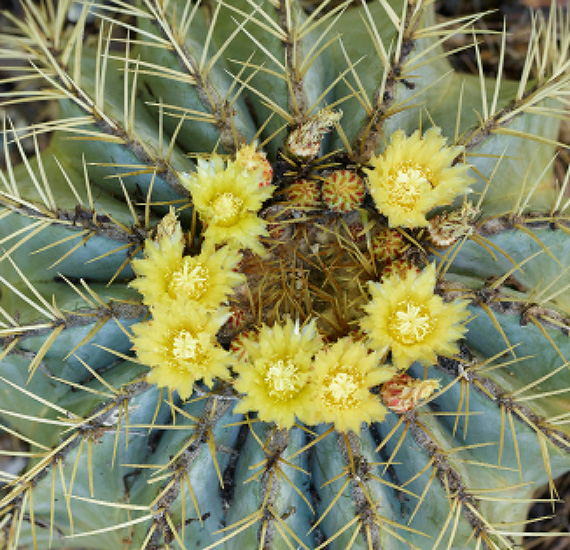
The
Bold
Dry
Garden
Lessons from the Ruth Bancroft Garden
Johanna Silver
PHOTOGRAPHS BY MARION BRENNER

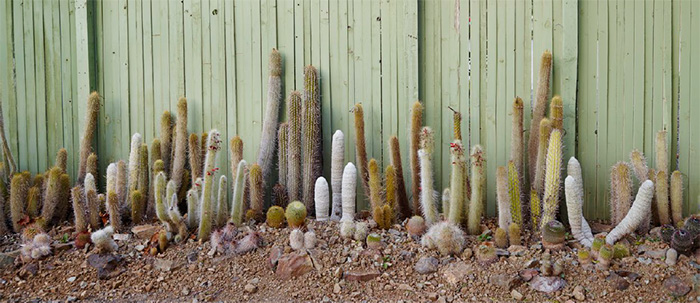
TO
RUTH
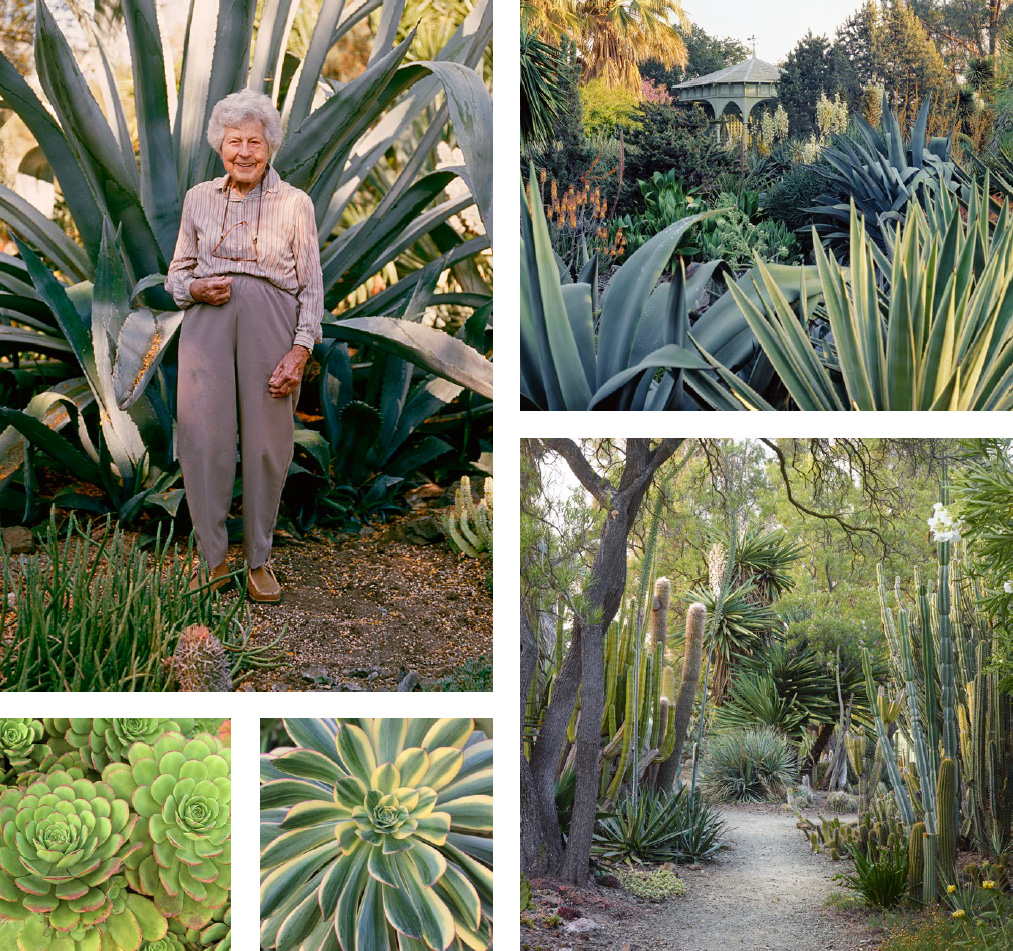
CONTENTS
by Richard G Turner Jr
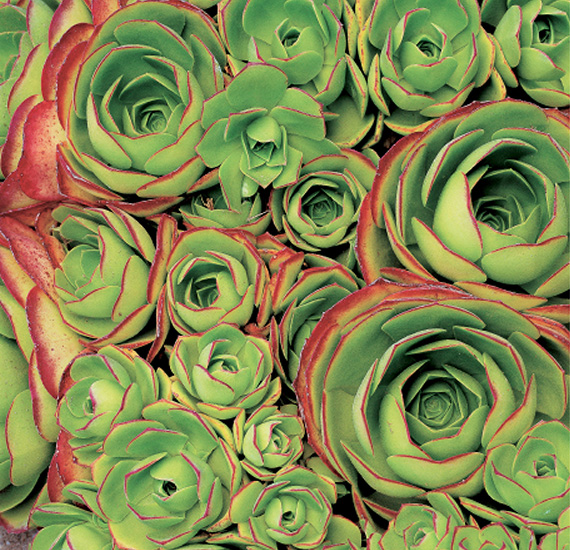
FOREWORD
M y childhood collection of bearded iris enlivened our small Michigan garden, but I struggled to maintain a collection of succulents in tiny pots on overly shaded windowsills. Upon moving to California in the late 1970s, I was thrilled to learn that both groups of plants thrived here. In old issues of California Horticultural Society Journal, I read of a magical garden in Walnut Creek filled with all sorts of shrubs, roses, and perennials (including a 200-foot-long border of bearded iris), as well as a two-acre succulent garden.
In 1979, my employer, Mai Arbegast, took me to see that garden and meet its creator, Ruth Bancroft. On a perfect day in late April, we arrived to find the bearded irises in full bloom and a stunning succulent garden bursting with color, textures, and exotic shapes (at least for this Midwesterner). I was in lovewith both the garden and Ruth (who was, admittedly, older than my mother).
I talked about that garden to anyone who would listen, and began taking people to Walnut Creek to see it and to meet Ruth. Each semester-long plant-identification course I taught at UC Berkeley ended with a field trip to Ruths garden, where I introduced the landscape architecture students to Ruth and to a bold and beautiful world of plants we scarcely had time to consider in class. I organized expeditions for members of the Strybing Arboretum Society to see this outstanding garden; even those who were disinclined toward succulents came away dazzled.
Frank Cabot was among those visitors. As a result of his first tour, he established the Garden Conservancy and encouraged his board of directors to choose Ruths garden as its first sponsored garden. I worked alongside prominent Bay Area horticulturists, landscape architects, and educators to help the Conservancy and Ruth map out a strategy for turning her private garden into a public space.
As a member of the advisory board and, later, executive director for the Ruth Bancroft Garden, Inc., I had the pleasure of spending many hours with Ruth, gradually absorbing her vision for the garden and learning to appreciate the intellectual curiosity that guided its development.
A distinctly private person, Ruth created her garden for herself, but she was always happy to share it with others who were intrigued with her selection of plants. A major task of the Garden Conservancy was to spread the word about this seemingly secret garden to those who might benefit from its many messages: the value of texture and form over flowers, the dramatic compositions possible with big-and-bold forms, the diversity inherent in the world of succulents, and the important role these beautiful plants can play in water conservation for an arid (and drying) climate.
And now, Johanna Silver, the Ruth Bancroft Garden, Marion Brenner, and Timber Press have produced this magnificent book to enchant and educate even more garden enthusiasts with the story of this inspired plantswomanand the brilliant garden she created.
Richard G Turner Jr
Editor emeritus, Pacific Horticulture
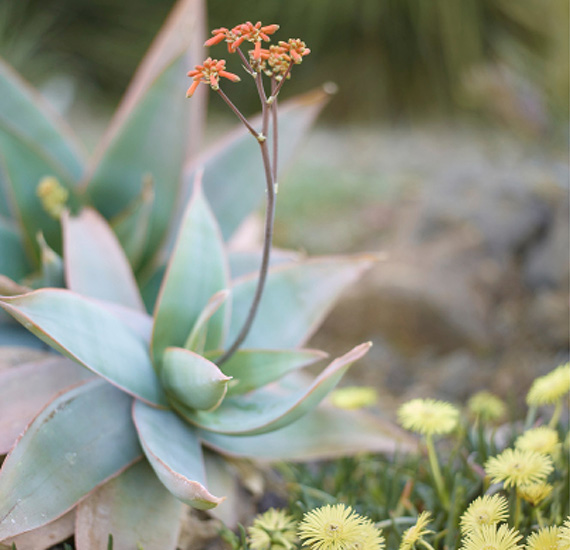
PREFACE
My Journey to Ruths Garden
B efore I started working on this book, I had never been to the Ruth Bancroft Garden. This was embarrassing for a garden editor at Sunset magazine to admit. Sure, I had heard of Ruths garden. I knew it was a dry garden. I had seen photographs of the arching bed of tightly planted small succulents shielded by a shade structure and portraits of Ruth standing next to a patch of giant Agave franzosinii, but I had never visited. My first trip to this iconic garden was to be interviewed as a potential writer for this book.
My first impression of the garden was that it was small (it is 3 acres under cultivation). I wondered if there was enough for an entire book, if I would get bored, and if there was enough to photograph. Despite my hesitation, I was grateful for the opportunity, eager to immerse myself in the topic of dry gardening in the face of Californias worst-ever drought, and excited about the chance to work with photographer Marion Brenner.
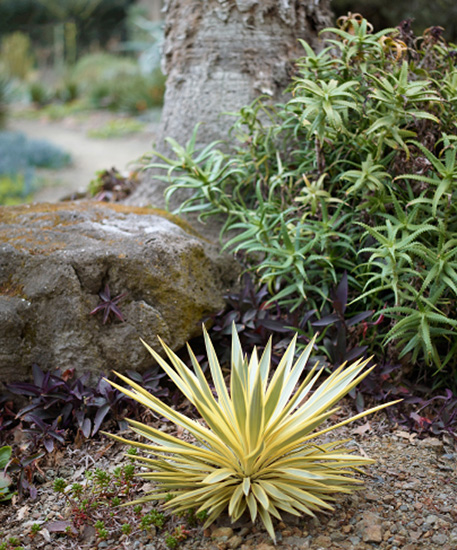
Yucca Bright Star shines surrounded by Tradescantia Purple Heart, with a backdrop of Kenyan Aloe kedongensis.
The year that followed was a crash course in Ruths life, Ruths plants, and Ruths garden. It has been the ultimate humbling experience. The first thing I learned was that fancying us both plant people would not be enough to make me understand Ruths drive. Ruth is a collector. I had no previous exposure to this subgroup, so I had to learn that more than just a love of plants motivates this population. Collectors have an insatiable need to possess knowledge, both intellectually and materially. Ruths garden came from her desire to grow each and every plant that interested her (a list that never shrank) in order to learn each one fully. I quickly realized that while I might pass as succulent-literate to a beginner, Ruths plant collection earns her extreme expert status, as her garden is a double black diamond of dry-adapted plants. Her small garden was too big and too full for me ever to fully grasp.
Many months into the project, it struck me that Marionno stranger to shooting gardens large or small, foreign or domestic, natural or formalhad not once tired of Ruths garden. She gleefully packed up her camera, tripod, and scrims and toted them out to Walnut Creek every weekend. Her enthusiasm deepened my interest. Marion, often bored by plant close-ups, could not get enough of them in Ruths garden. Individual species were endlessly fascinating: the spiny, ornate cactus are curiously enticing, and their flowers are disproportionately delicate and daintyan awesome foil to those spines. Marion and I obsessed over subtlety we had never known, like the metallic sheen on new opuntia growth that we spent almost a full afternoon capturing. But Marion never tired of the vistas in the garden; I often had to holler at her to keep moving. Finally I acquiesced. Marion was right to linger, as the garden was always changing. The plants ebbed and flowed in their seasons of bloom and sleep. I expected year-round structure from cactus and succulents, but not the constant year-round change in growth and dormancy we encountered. We would arrive at the garden and try to walk around before setting up the camera, just to make sure we would not get so captivated by something near the entrance that we would never make it to the further reaches. Different things caught our eyes each time, from the tiniest ring of flowers that had developed along the crown of a cactus sitting at ground level to a freshly formed agave flower stalk that looked like a rocket about to propel into space. Ruths garden boasts aloe plants in bloom from winter through summer, thanks to her longtime greenhouse manager, Brian Kemble, who has mastered a collection that is always giving. In spring, agaves swam amid a sea of orange- and yellow-flowered bulbine, but by early summer, ruby grass (
Next page












